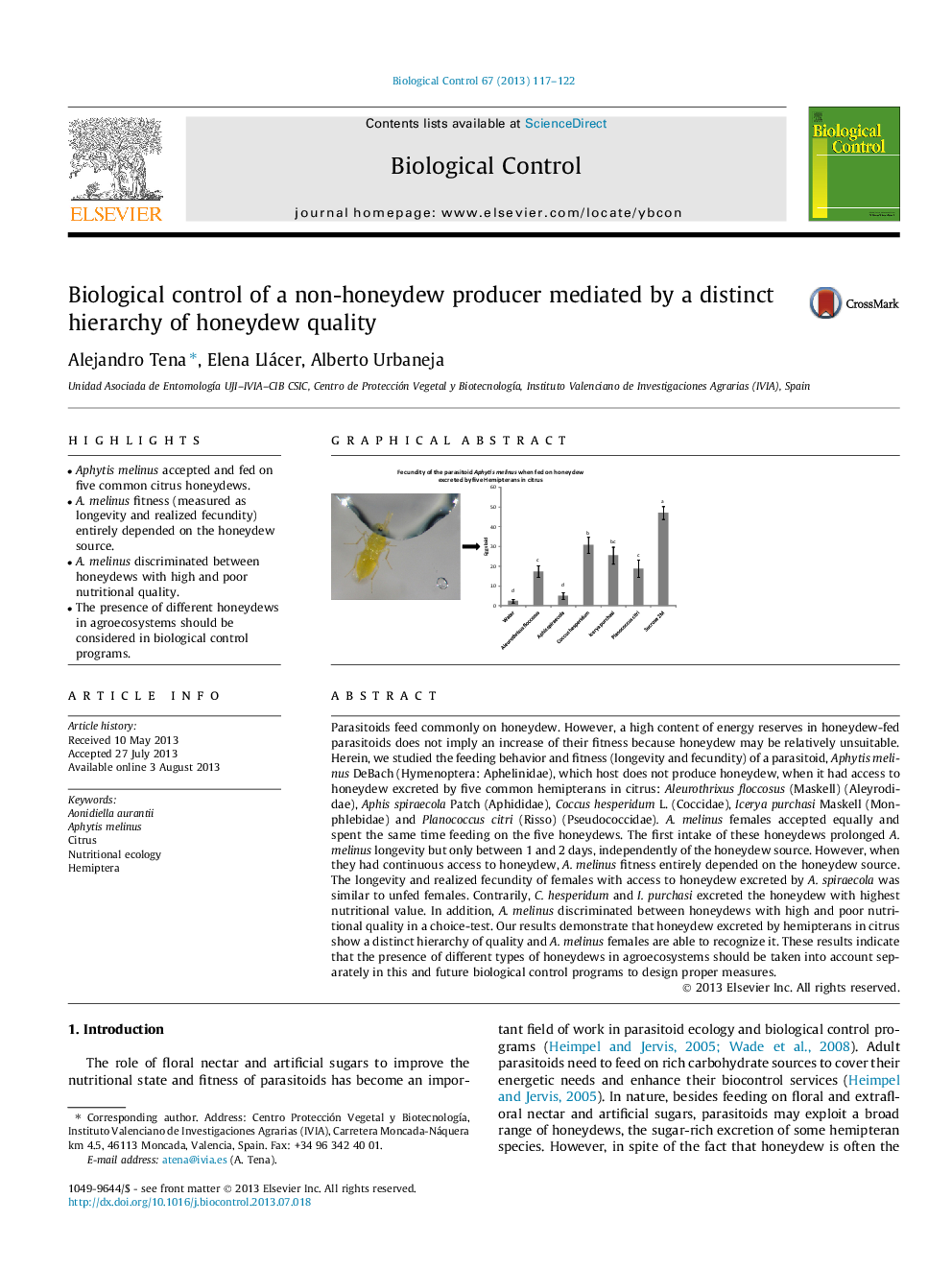| Article ID | Journal | Published Year | Pages | File Type |
|---|---|---|---|---|
| 4504040 | Biological Control | 2013 | 6 Pages |
•Aphytis melinus accepted and fed on five common citrus honeydews.•A. melinus fitness (measured as longevity and realized fecundity) entirely depended on the honeydew source.•A. melinus discriminated between honeydews with high and poor nutritional quality.•The presence of different honeydews in agroecosystems should be considered in biological control programs.
Parasitoids feed commonly on honeydew. However, a high content of energy reserves in honeydew-fed parasitoids does not imply an increase of their fitness because honeydew may be relatively unsuitable. Herein, we studied the feeding behavior and fitness (longevity and fecundity) of a parasitoid, Aphytis melinus DeBach (Hymenoptera: Aphelinidae), which host does not produce honeydew, when it had access to honeydew excreted by five common hemipterans in citrus: Aleurothrixus floccosus (Maskell) (Aleyrodidae), Aphis spiraecola Patch (Aphididae), Coccus hesperidum L. (Coccidae), Icerya purchasi Maskell (Monphlebidae) and Planococcus citri (Risso) (Pseudococcidae). A. melinus females accepted equally and spent the same time feeding on the five honeydews. The first intake of these honeydews prolonged A. melinus longevity but only between 1 and 2 days, independently of the honeydew source. However, when they had continuous access to honeydew, A. melinus fitness entirely depended on the honeydew source. The longevity and realized fecundity of females with access to honeydew excreted by A. spiraecola was similar to unfed females. Contrarily, C. hesperidum and I. purchasi excreted the honeydew with highest nutritional value. In addition, A. melinus discriminated between honeydews with high and poor nutritional quality in a choice-test. Our results demonstrate that honeydew excreted by hemipterans in citrus show a distinct hierarchy of quality and A. melinus females are able to recognize it. These results indicate that the presence of different types of honeydews in agroecosystems should be taken into account separately in this and future biological control programs to design proper measures.
Graphical abstractFigure optionsDownload full-size imageDownload as PowerPoint slide
